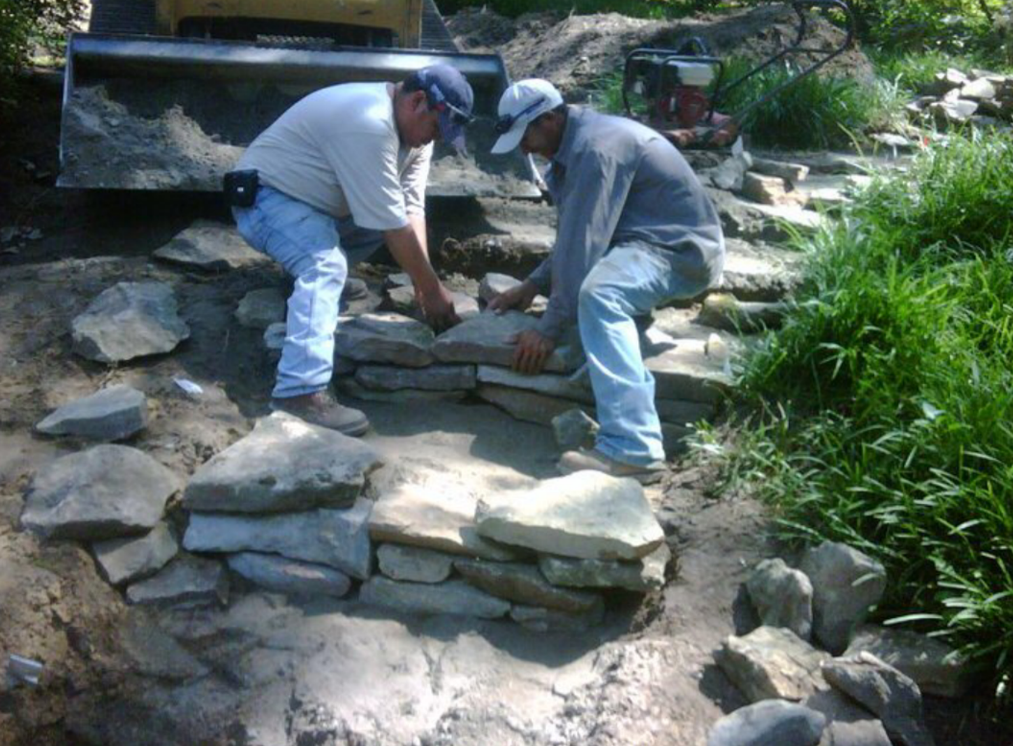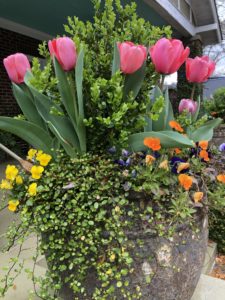Ever thought, there is so much to do on this landscaping project and I don’t know where to start? Good news! There is an order of operations to follow. I have learned the best sequence of tasks in a typical landscaping project. Through doing these in the wrong order is pretty much the only way to learn what not to do. What is the best order of task?
- Sleeving
- Hardscaping
- Grading
- Hard Grading
- Soft Grading
- Irrigating
- Irrigating turf
- Irrigating beds
- Drip irrigation
- Planting
- Mulching
- Grassing
- Maintenance

Sleeving is when you lay a pipe down under a coming driveway, sidewalk or any other hardscape. This pipe needs to have tape on both ends so that water and dirt don’t fill it up. The pipe is used to pull wires and irrigation pipes under the hardscape after it is installed. Remember to mark where the ends of the lateral piping is location with a few vertical pieces of pipe shoved into the ground so that you can find them easily after development of the hardscape.

Next in order is hardscaping. Finish installing all of the perminate structures like driveways, sidewalks, patios, walkways and firepits before even ordering the first plant. It is important to complete these structures first because many times during installation of these something changes. There is something that happens that is not quite exactly installed as designed so an ‘As-Built’ needs to be made. An ‘As-Built’ map is a drawing that shows what was intended vs what was actually built.
I have seen many reasons for landscape designs not going as planned. Everything from hitting big boulders when trying to excavate to realizing there are underground utilities and we can’t dig where the designer exactly wants. So, we have to be a little flexible in order to get the job done. Once the sleeve pipes and the hardscapes are installed and concrete is cured, then we start hard grading. This is when you use machines like excavators, motorgraders, skidsteers and miniexcavators to move large amounts of dirt and get the bulk of the work done quickly.
Soft grading is completed with shovels, rakes and sometimes in combination with even level pans or Harley Rakes on dingo equipment. Soft grading is in final prep before the irrigation and plants go in the ground. The irrigation installation is the next in line because you want to make sure this works before you order a ton of money worth of plants.
Plants of trees, shrubs then annuals are complete next in that order. No need to worry about the small shrubs yet until the trees are where they will work best. Often times the shrub layout is in the ball park to the initial design but needs some adjustments to make it workout. Mulch is installed once the irrigation is tested again after installation to make sure nothing was damaged during planting. More on the property order for irrigation installation in a future blog.
After the mulch is installed and the last bale of pinestraw is tucked or the last yard of Double Hammered Hardwood Mulch (DHHM) is spread, then and only then does the sod go out. There are few things worse in the world than when you install the sod and it looks perfect, but then your guys walk right over it carrying bales of pinestraw in tow. The sod must be watered in after installation so the soil is normally mucky and divots or footprints are often left behind. These can be really difficult to repair and often left to dry. So the moral of the story is that the sod goes down last
What I like to do is install the sod and walk away from the project because its completed. Then comes maintenance to the property. Checking on all of the plants and looking for dry spots in the sod during those first few weeks can save lots of money having to replant after something dies. Make sure to wait before cutting the lawn until the sod is secure and has formed solid roots. Often times, I like to rope off with caution tape around the new sod so people don’t mistakenly walk through it causing me to have to go back and fix it.


